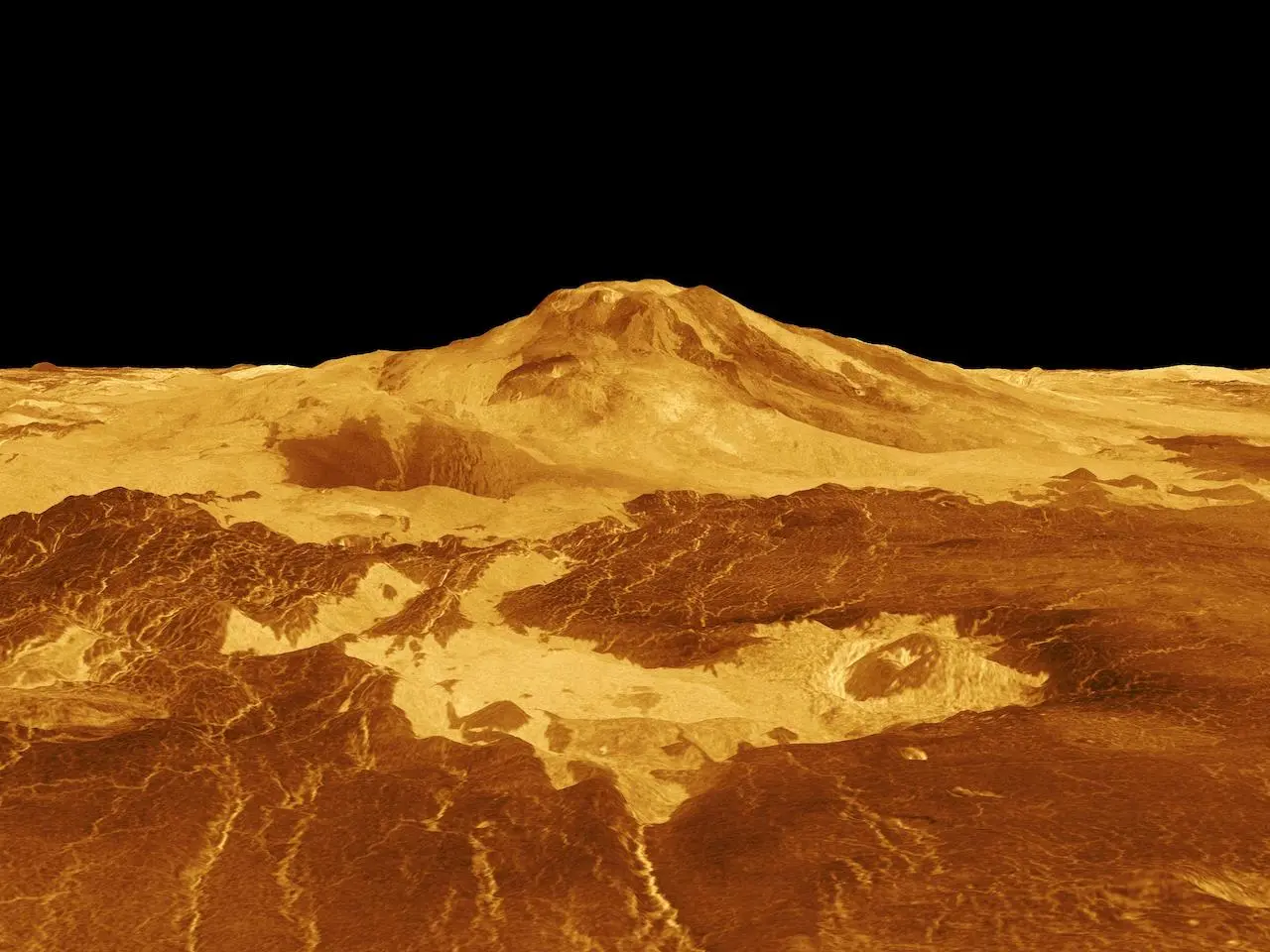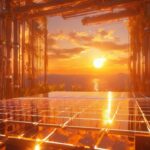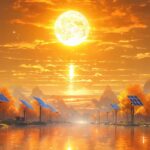Get ready for an out-of-this-world adventure! We’re stepping beyond Earth to discover the incredible volcanoes that make other planets and moons a sight to behold. These cosmic firecrackers are shaping the landscapes, warming the atmospheres, and giving us clues about the history of our solar system. From fiery mountains on Mars to icy volcanoes on Jupiter’s moons, we’ll explore the differences and similarities that make these celestial wonders so fascinating. Let’s dive into the explosive world of Volcanoes: The Active Forces Shaping Other Worlds and learn how these cosmic fireworks are lighting up the universe!
Volcanoes on Other Planets: A Spectacular Cosmic Journey
Volcanic Tales from Our Cosmic Neighborhood
Venture beyond Earth’s confines and you’ll find that volcanoes are not just Earthly wonders. They’re celestial artists that have left their mark all over our solar system.
Io’s Volcanic Party
Picture this: a world where volcanoes dance with fiery abandon. That’s Io, Jupiter’s volcanic moon. Here, eruptions erupt in spectacular fashion, launching lava fountains so high they could tickle the clouds. It’s like a rock ‘n’ roll concert, only with flowing lava and molten fireballs.
Triton’s Icy Inferno
Who would’ve thought that hidden beneath Triton’s icy crust lies a volcanic secret? Recent eruptions have carved out icy volcanoes, hinting that there’s a hot spot beneath its chilly exterior. It’s like discovering a fire-breathing dragon hiding in an ice cave.
Enceladus’s Geyser Getaway
Enceladus, Saturn’s icy satellite, might look serene, but it has a hidden surprise. Its ocean, buried beneath a thick icy shell, fuels geysers that shoot icy crystals and organic molecules into the cosmos. It’s like a giant cosmic party, complete with delicious fireworks and cosmic punch.
Venus’s Volcanic Past
Venus, Earth’s fiery neighbor, has a volcanic past that would make Mount Fuji blush. Its surface is littered with massive volcanoes that dwarf Earth’s greatest peaks. These giants stand as silent witnesses to a time when Venus was a bubbling lava world.
Mars’s Volcanic Legacy
Mars, the Red Planet, has a volcanic history that’s as fascinating as it is ancient. Gigantic volcanoes, towering canyons, and vast lava flows tell the tale of a planet that was once a fiery inferno. These geological masterpieces remind us that even the most barren of worlds have a story to tell.
Cosmic Volcanoes: A Tapestry of Wonder
Volcanoes on other planets are a testament to the incredible diversity of our solar system. They’re not just geological wonders; they’re cosmic storytellers, painting a vivid tapestry of planetary evolution. From Io’s raging fires to Enceladus’s geyser dance, these volcanic wonders offer a glimpse into the awe-inspiring processes that shape our celestial home.
Get ready to explore the fascinating world of volcanoes! Dive into the famous volcanoes that have shaped our planet’s history and learn about the different types of volcanoes that exist. Understand the volcanic hazards and risks associated with these powerful natural wonders. Travel back in time to witness famous volcanic eruptions in history that have had a profound impact on civilizations. Discover the connection between volcanoes and climate change and how it affects our planet’s ecosystems. Stay informed about volcano tourism and safety to ensure an unforgettable and safe experience when visiting these majestic formations. Explore the unique volcanic islands and archipelagos that have emerged from volcanic activity, creating diverse and captivating landscapes. Learn about the fascinating volcanic rocks and minerals that provide valuable insights into the Earth’s geological processes. Tap into the potential of geothermal energy from volcanoes as a sustainable and renewable energy source. Stay updated on the latest volcano monitoring and prediction techniques to mitigate volcanic hazards and protect communities.
How many volcanoes are on Venus?
Hold on tight, dear reader! We’re about to embark on a volcanic voyage to Venus, a planet that will make you rethink the meaning of “volcano-central.”
Venus, our celestial neighbor, boasts a mind-boggling 85,000 volcanoes! Earth, with its measly 1,500 volcanoes, looks like a pimple on a Titan’s face compared to this volcanic wonderland.
How did we uncover this volcanic treasure trove? We have NASA’s Magellan mission to thank. Armed with radar eyes, Magellan peered through Venus’ thick clouds, revealing a surface covered in volcanic mounds, like a Martian landscape gone wild.
But wait, there’s more! Ninety-nine percent of these volcanoes are relatively modest, under 3 miles wide. They’re like the Mini Coopers of the volcanic world, scurrying around the planet’s surface. And as if that’s not impressive enough, a whopping 90% of Venus’ surface is covered in basalt, the rock that forms from volcanic eruptions.
To put this into perspective, imagine visiting Venus and finding yourself standing on the Titanic. Instead of the icy waters of the North Atlantic, you’re surrounded by a sea of ancient and modern volcanic flows. The planet’s history is etched into each lava tube and cinder cone.
So, what’s the secret behind Venus’ volcanic frenzy? It’s all about the atmosphere. Venus has a thick, blanket-like atmosphere that traps heat like a greenhouse. This intense heat keeps the planet’s surface sizzling, driving widespread volcanism.
While we can’t directly see these volcanoes from Earth, ongoing research suggests that Venus may still have active volcanoes lurking beneath its cloudy veil. With every new discovery, we uncover more of Venus’ enigmatic past and present, shedding light on the potential for life beyond our own blue planet.
What makes Io the most volcanically active body?
Picture this: Io, Jupiter’s fiery moon, is like a cosmic volcano factory! It’s so volcanic, it makes Earth’s measly volcanoes look like child’s play. But what’s the secret behind this fiery frenzy?
It all boils down to location, location, location. Io’s close proximity to Jupiter, the solar system’s heavyweight champ, is the key. Jupiter’s gravity is like a cosmic puppeteer, pulling and squeezing Io like a stress ball. This gravitational dance generates a ton of heat deep inside Io, enough to melt the moon’s rocky core.
And here’s another twist: Io’s not made of your typical rock. It’s packed with sulfur and sulfur dioxide, substances that are ready to explode like popcorn when they get hot. These volatile gases act like pressure cookers, building up pressure until it’s game over for the moon’s volcanic skin.
So there you have it—a cosmic dance of gravity and chemical chaos that makes Io the ultimate volcanic playground. Next time you look up at the night sky, spare a thought for this fiery celestial performer, putting on a show that would make any pyrotechnician green with envy.
Fascinating Tidbits about Io’s Volcanic Symphony:
- Did you know that Io spews out more lava than all the volcanoes on Earth combined? That’s like a cosmic fireworks display on steroids!
- Io’s volcanoes are so active that they can launch lava bombs as big as small cars. Watch out, space travelers!
- Scientists have identified over 400 volcanoes on Io, making it a veritable volcanic metropolis in space.
Comparison: Io vs. Earthly Volcanoes
| Feature | Io | Earthly Volcanoes |
|---|---|---|
| Activity Level | Most volcanically active body in the solar system | Relatively quiet |
| Lava Output | More lava than all Earth’s volcanoes combined | Limited lava production |
| Composition | Sulfur and sulfur dioxide | Silica-rich rocks |
Which other planets show evidence of past volcanic activity?
Our solar system is a hotbed of ancient volcanic activity, with planets and moons displaying signs of explosive eruptions and flowing lava. Join us on a journey to discover the other worlds where volcanoes once raged.
Mars: The Red Planet’s Fiery Past
Mars, our rusty neighbor, holds secrets of a bygone era. Towering volcanoes once erupted with fury, carving deep canyons and leaving behind vast lava plains. Though these volcanoes have long been dormant, they stand as testament to Mars’ once-vibrant volcanic history.
Venus: A Volcano Extravaganza
Hidden beneath a thick veil of clouds, Venus unveils a volcanic paradise. Its surface is dotted with a staggering array of volcanoes – some rising several miles high. These colossal peaks paint a vivid tableau of Venus’ fiery past, suggesting eruptions that shaped its landscape.
Io: Jupiter’s Eruption-Filled Moon
Amidst the swirling gases of Jupiter, Io emerges as a volcanic spectacle. Gravitational forces stir its molten heart, resulting in explosive lava fountains and volcanic landscapes that constantly evolve. Io’s fiery nature makes it the most volcanically active object in our solar system.
Beyond the Familiar: Volcanic Echoes
Volcanic traces extend far beyond these well-known worlds. Triton, Neptune’s icy moon, hides volcanic remnants beneath its frozen crust. Enceladus, Saturn’s enigmatic moon, releases icy plumes and organic molecules, hinting at past volcanic activity.
The Solar System’s Volcanic Roster
For your reference, here’s a table summarizing the planets and moons that have shown evidence of past volcanic activity:
| Planet/Moon | Volcanic Activity |
|---|---|
| Mars | Dormant volcanoes, lava flows |
| Venus | 85,000 volcanoes, active eruptions possible |
| Io (Jupiter’s Moon) | Most volcanically active object in our solar system |
| Triton (Neptune’s Moon) | Volcanic remnants beneath ice |
| Enceladus (Saturn’s Moon) | Past volcanic activity, icy plume emissions |
Conclusion:
Our solar system’s planets and moons present a tapestry of volcanic wonders, revealing the diverse ways in which volcanic forces have shaped their surfaces. From the towering peaks of Mars to the fiery eruptions of Io, these ancient volcanic episodes provide glimpses into the dynamic history of our cosmic neighborhood.
FAQ
Q1: Which celestial bodies in our solar system have active volcanoes?
A1: Currently, Earth and Io (a moon of Jupiter) have active volcanoes.
Q2: Are there planets with dormant or extinct volcanoes?
A2: Yes, planets like Venus, Mars, and Io have dormant or extinct volcanoes.
Q3: What is the most volcanically active body in the solar system?
A3: Io, Jupiter’s moon, is the most volcanically active body in the solar system.
Q4: Has Venus ever had active volcanoes?
A4: Yes, Venus is believed to have had active volcanoes in the past, but there is no evidence of recent activity.
Q5: What are the unique characteristics of volcanoes on other planets?
A5: Volcanoes on other planets exhibit diverse characteristics, ranging from small-scale features on Venus to massive eruptions on Io, and are shaped by factors such as tidal forces and planetary composition.
- Unlocking Francis Alexander Shields’ Finance Empire: A Comprehensive Biography - July 12, 2025
- Unveiling Francis Alexander Shields: A Business Legacy - July 12, 2025
- Francis Alexander Shields’ Business Career: A Comprehensive Overview - July 12, 2025















